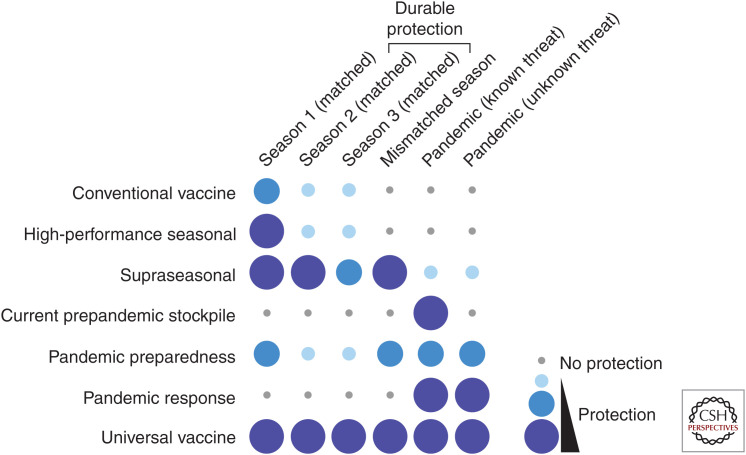Figure 1.
Visualized summary of target product profile of current and improved influenza vaccines. Conventional vaccines (current influenza vaccines) confer protection against antigenically matched seasonal influenza viruses. Vaccine efficacy varies year by year. An example of high-performance seasonal vaccines would be one that offers better protective immunity to antigenically matched seasonal influenza viruses, even though they may not provide durable multiyear protection nor protection against mismatched or pandemic viruses. An example of a supraseasonal vaccine would be one that provides consistent protection against antigenically drifted (mismatched) viruses and offers multiyear protection beyond a single influenza season, but may have limited efficacy against pandemic strains. Prepandemic stockpile vaccines (conventional) would work only if the pandemic virus is closely related to the stockpile vaccine strain. An example of a vaccine for pandemic preparedness would be one that provides broad protection against both seasonal and pandemic viruses, although the protective efficacy may not be as high as with strain-matched vaccines. This would allow options for immediate deployment during outbreak with a partially effective intervention. Vaccines for pandemic response would offer potent protection against pandemic viruses as these vaccines would be produced by platform manufacturing technologies using specific sequences from the emerging virus. Universal vaccines are expected to provide robust protection against both seasonal and pandemic viruses over multiple years.

